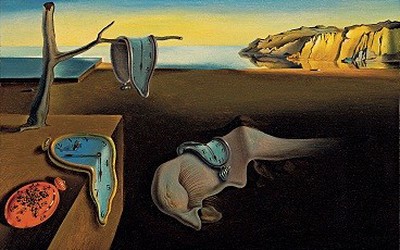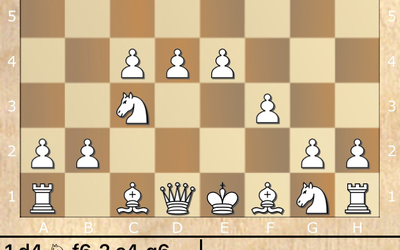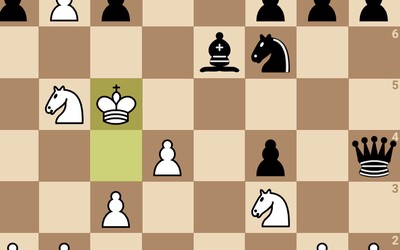
Ecstasy and Agony in the 6.Bc4 Najdorf
Opening preparation these days is a vastly different creature than it was 5-10 years ago. Increased computing power and more accessible sources of information are big equalizers for those with less experience. Nevertheless many aspects of opening preparation remain omnipresent; in this article I will not only show one of my best discoveries of the past several years (the ecstasy part of opening preparation), how I came to discover such an idea, as well as the subsequent antidotes found to it and those who beat me to the punch by playing it otb (the agony of opening preparation).At the start of the pandemic I remember very clearly Daniil Dubov revealing several spectacular ideas/novelties in online tournaments, almost irrespective of the competitive importance of the games. Like many others I wondered why and in an interview he gave a clear answer "Well where else am I going to play them?". In my heart of hearts I knew he was right but I didn't want to believe it. There are several celebrated cases of players storing a surprising novelty for an important game. For instance one of the first cases that comes to mind is Capablanca-Marshall where Marshall had supposedly stored the idea of what was to become the Marshall gambit for several years in preparation for Capablanca. Famously, Capablanca went on to diffuse black's scary attack "at spec" and went on to win an iconic game. I also highlight some further evolutions of Marshall's idea in the notes.
The history buffs among us might say that the whole narrative of the Capablanca-Marshall game is false. I will not dispute that but rather leave those interested to look up Edward Winter's writings on the subject. One case of a novelty being stored for several years only to be revealed in an important game can be seen in the game Anand-Adams San Luis 2005. Anand supposedly prepared Qd2!! for his 1995 Candidates match vs Gata Kamsky. He was unable to use it then but what better time to break it out than in a World Championship game?
Interesting ideas, won't you agree? After years of being hopelessly addicted to studying opening theory I've built up my own fair share of ideas, some of which lay dormant for many years much like the ideas above. I'm often asked how such ideas are developed and the answers are numerous. It often starts with an inspirational game; such games can open our mind to new approaches to familiar positions. A process like this is detailed in an excellent video by Alex Colovic about a variation in the English Attack https://youtu.be/Hj-5Z_JfO_A?si=E5_nqWwIpbwDDO2x. The big idea which will be revealed later had its roots in an inspirational game, Ivanchuk-Karjakin 2008. Known as Ivanchuk's birthday bomb in the New in Chess Yearbook surveys (yearbooks 87 and 88) that covered the idea and developments around it, it remains one of my favorite opening ideas ever discovered. The antidote that was later found did little to diminish my admiration for the idea, even if it didn't seem practical to use anymore. We will encounter more highs and lows like this later in the article as they are commonplace in modern opening preparation. Nevertheless the vibe of white's approach with castling long coupled with ultra rapid development appealed to me and led to seek alternative ways to implement such ideas. In this section I will give a brief survey of the current state of theory as well as some ideas to try to make the 7.Bb3 move order a dangerous practical try. Some highlights for the opening geeks among us include 8.a3 Be7 9.g4, 8.Bg5 Be7 9.a3 (a big hit with today's engines), as well as the surprising idea of 10.0-0-0 Nbd7 11.Rhe1 0-0 12.e5!? all of which are not covered in any Najdorf sources that I am aware of (Chessable courses by Giri and Cheparinov, as well as a 2 part camp on the Najdorf by Papaioannou for Modern Chess are among some of the resources I consulted with). I even cover a new move order with 6.Bg5 e6 7.Bc4!? which is very rare and not covered well in existing literature.
At the beginning of August of 2021 I had experienced a breath of fresh air in the form of the game Adhiban-Mishra. Given my predilection for castling long in the Sozin this idea appealed to me instantly. Also unlike the Ivanchuk's original move order, the possibilities to blend pawn play with piece play seemed to give this new approach a comparatively more sound strategic foundation. However there was one problem, the computers absolutely hated it, thinking white was much worse at the key juncture at move 12. I would later find out that this was hardly the case and the approach was quite playable offering good practical chances. I outline the details of this move order as well as offer some explanation between 7.Bb3 and 7.Be3 below.
So far so good! A fresh approach not covered in any literature, fools the computers, and sound with good practical chances, what's not to like? As an eternal pessimist I would have been shocked if someone were to tell me that it would get even better as I found an improvement to Adhiban's original play. The stunning 12.Nf4!! which aims to bludgeon e6 by sheer brute force (much like Ivanchuk's birthday bomb) could easily pass undetected by the engines of that time was perhaps one of my best discoveries of the last 5 or more years. Initially I thought I was the first person to ever play this idea but in writing this article I found a game which was played 2 days after the Adhiban-Mishra game given above, a game which I was previously unaware of. Below I summarize some of the recent developments in this bomb using both OTB games (I could only track down a handful) and some of the online games from lichess.
So far, we've experienced only ecstasy, the intoxicating highs of opening preparation. The thrill of new discovery, being among the first to play the idea etc. Are you ready for the agony? Like many other opening bombs before it, antidotes were soon found and the idea becomes more and more known. I saw the writing on the wall when I saw a chessbase India video detailing a spectacular draw between Puranik and Giri from the Qatar Masters (https://www.youtube.com/watch?v=IyF5ib-uxGE&t=1113s&pp=ygUXY2hlc3NiYXNlIGluZGlhIHB1cmFuaWs%3D). In that game Giri played 11..Nfd7 which essentially forces white to take a draw (albeit a spectacular one). Even in the subsequent interview the idea of 11..Bb7 12.Nf4!! wasn't outright revealed but it was hinted at, thus providing me the inspiration I needed to write this article. As such ideas become more visible they lose some practical appeal; for instance some of the lines where white is forced to take a draw without even a reasonable way to play on make it so that it becomes hard to keep this line as a "first-string" type of line. However such lines do have their time and place in games vs higher rated players or other situations where a draw is ok. Furthermore in today's modern game the 1.e4 player should have a rotation of anti-Najdorf ideas to avoid being a sitting duck, so perhaps this could deserve a spot in such a rotation. I show some of the antidotes and some of my proposals to give the 6.Bc4 long castling approach a longer shelf-life below.
We now come to the end of this article, thank you so much for joining me on this chaotic trip. I always used to believe that such crazy ideas like 12.Nf4!! were to be hidden for use in an important game and now I believe this view has to be change. Simply put, if you have a great new idea then it's probably better to play it sooner rather than later, even in an online blitz game. If you want credit for it, that is.
If you enjoyed this analysis and you have any questions or comments please don't hesitate to let me know either in the comment section or through private message. I am also available for consultation or private lessons and have experience working with players of all levels, including doing seconding work for a few Grandmasters.
View more blog posts by Vitamixbrand

Intriguing examples of voluntary time loss in the opening
Modern chess has become and continues to be an increasingly concrete game. General considerations an…
Stunners in the Samisch-Benoni/KID complex
The King's Indian Defense is one of the most challenging yet rewarding defenses available to black. …
The Walk of No Shame (Opening Repertoire Ideas for Bongcloud Fanatics)
If you asked several chess players to make a list of the swaggiest things one can pull off in a game…